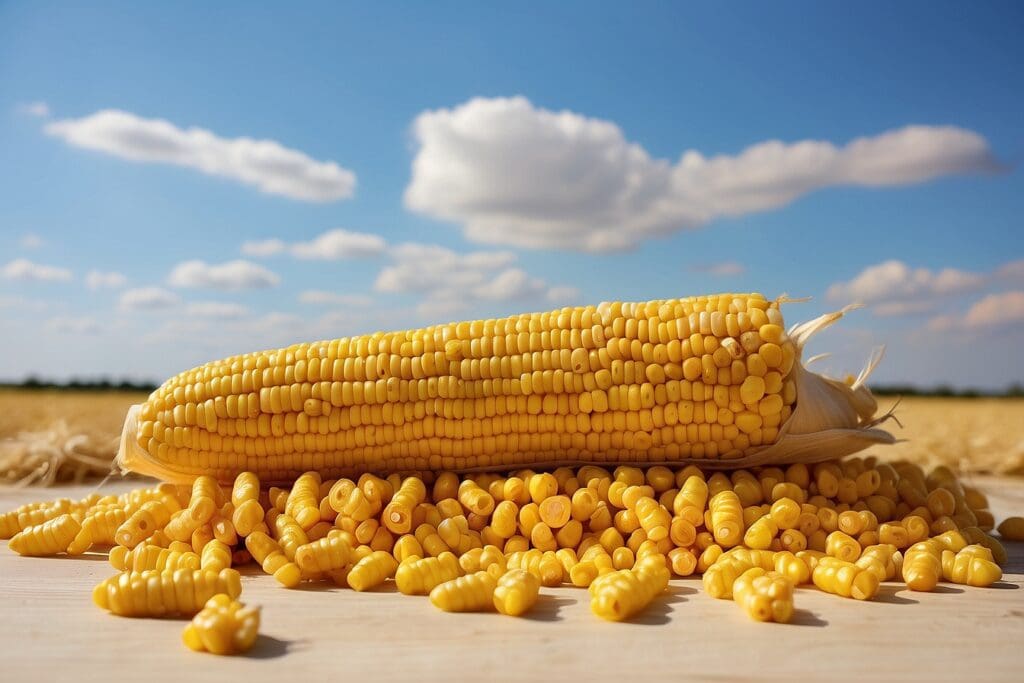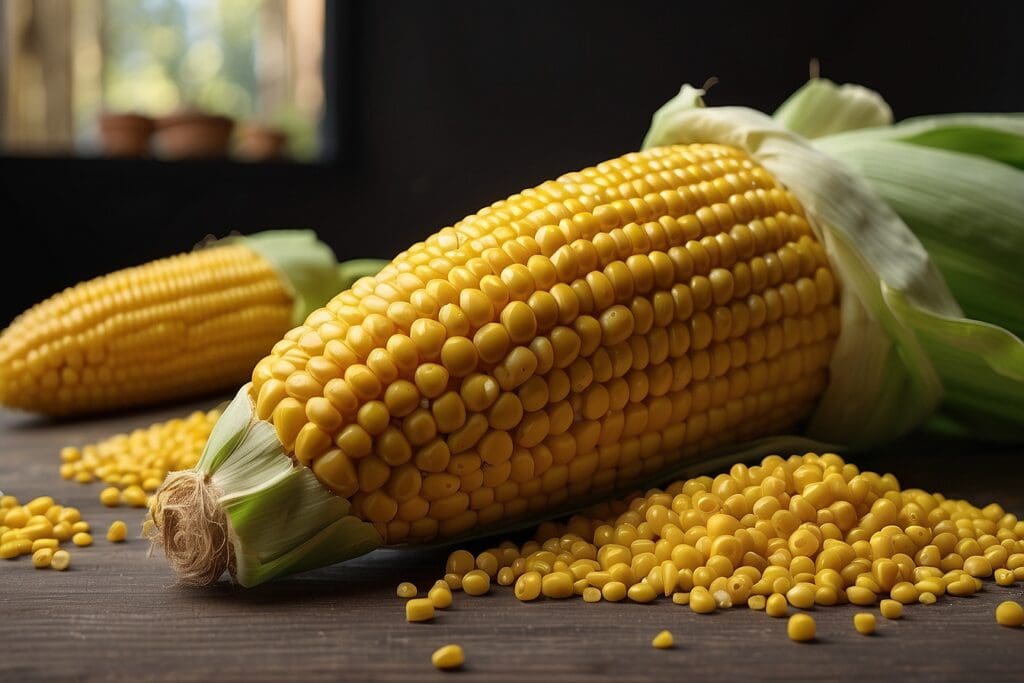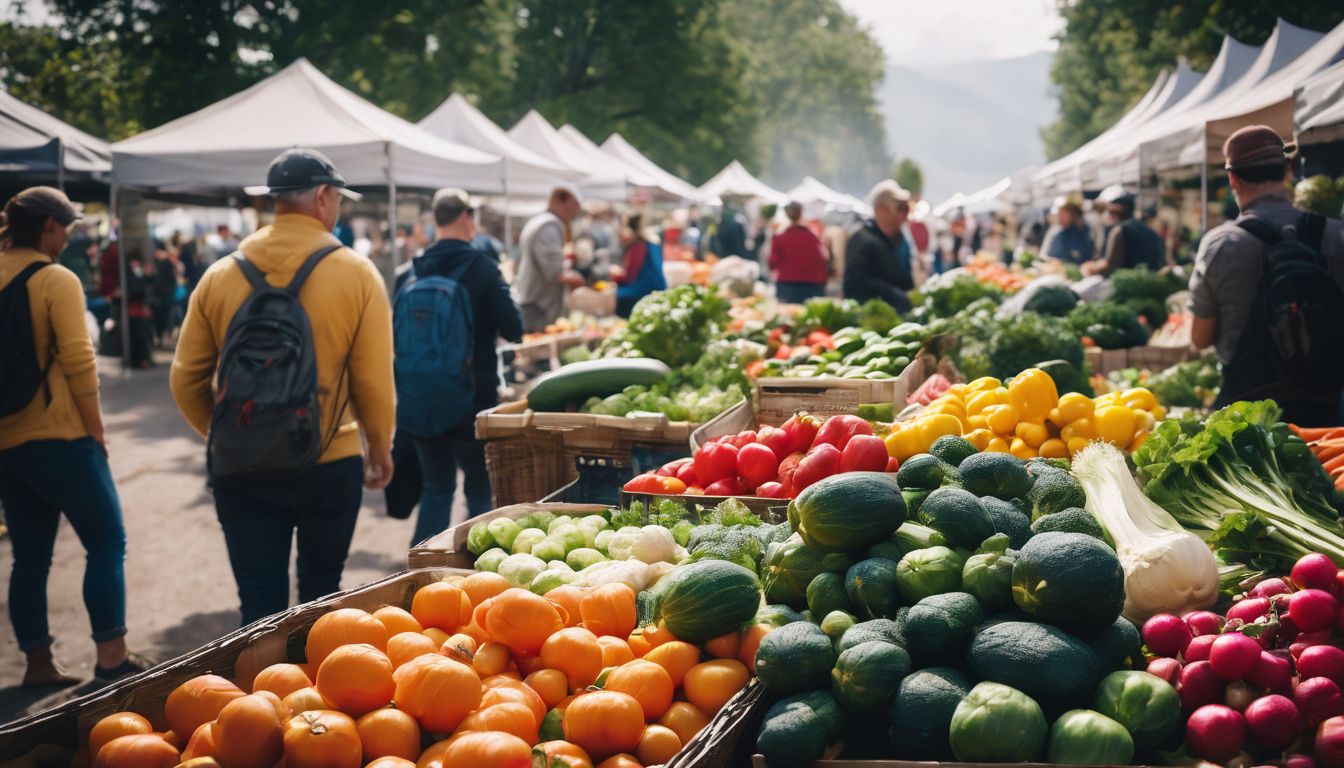The sun rays beam in through the window and the song birds start to chirp, bringing the start of a fresh new day. What you don’t know is that from the moment you wake up, corn will play a huge role throughout your everyday life. Of course corn is in many food items, such as popcorn, cereal, and anything that is made of corn syrup or corn starch, but it is much more than just an ingredient used in cooking.
7:30 AM: It’s time to wake up and brush your teeth, so grab that toothbrush and that tube of toothpaste! Toothpaste relies on a stable and good-quality compound known as Sorbitol which will keep the toothpaste thermally and chemically stable.1 Sorbitol is a corn based mixture that is distilled from corn kernels and is commonly used as a sweetener, but is also used in toothpaste for taste and stabilizing because it “is a low calorie, water-soluble, bulking agent.”2 So, from the moment you brush your teeth in the morning, corn has already played a role in your day.
8:00 AM: You probably want to listen to the radio while you drink your coffee and breakfast (which is probably partially made with corn). If the radio is powered by a battery, corn is allowing you to hear your daily traffic and weather forecast. Have kids? The crayons3 you pack in their school bags use corn as a binder. The plastic bags that contain their lunch most likely contain corn products and one day very soon so could their backpacks and your clothing. Corn is in the development stages of making its way into the enormous textile industry!4
8:30 AM: You get into your car to get to work. The convenience of driving from place to place with ease is thanks to the corn used in the rubber of the tires (well not just but most likely soon),5 the car battery (maybe),6 and certainly the gas in your tank comprised partially of ethanol fuel.
9:00 AM: Now begins a day of work. In many environmentally friendly offices across the
 8globe, recycled paper is preferred to virgin paper. When recycled paper was first introduced, the quality of the paper was very lack luster. In order for that recycled paper to compete with the durability and texture of regular ol’ copy paper, corn starch is used to make sure recycled paper isn’t flimsy and weak. Want to post a reminder to yourself for later that day? Well, pin it on your cork board! That cork board is made of corn as well. From the ink to print documents, to the shades on the windows to keep the work space cool, corn makes up a large majority of everyday items found in your very own office—and probably your home as well!7
8globe, recycled paper is preferred to virgin paper. When recycled paper was first introduced, the quality of the paper was very lack luster. In order for that recycled paper to compete with the durability and texture of regular ol’ copy paper, corn starch is used to make sure recycled paper isn’t flimsy and weak. Want to post a reminder to yourself for later that day? Well, pin it on your cork board! That cork board is made of corn as well. From the ink to print documents, to the shades on the windows to keep the work space cool, corn makes up a large majority of everyday items found in your very own office—and probably your home as well!7
12:00 PM: Lunch time! Everyone knows that corn is an edible product and is used in many foods in the form of a sweetener, corn meal, corn starch, or just a dish on its own. However, did you know that every bite of meat you have is a result of corn production? Because of corn’s large availability and the ability to be grown year round, corn meal is the feed of choice for meat producers everywhere. This is not exactly healthy for the livestock.9 For example, cows are meant to be grazers and eat the leafy greens of the plains, but they are fed corn on a daily basis, causing them to be in deficit of the proper nutrients to ensure healthy life (and therefore, healthy meat for us).

5:00 PM: When the end of the work day comes, your home welcomes you. It is time to take care of the children and pets. As you enter your home, you pass a lovely family portrait, which was produced on photographic film.10 Photographic film requires antihalation backing or powder to reduce reflections of light in pictures,11 which is commonly made of corn starch. If this is a cat household, thank corn and corn meal for the fact your house does not smell like the dead end of a street alley. Some cat litter is made of corn based products to absorb and eliminate odors and moisture. However, there have been some studies done that corn based kitty litter is not the safest due to corn’s reaction with moisture, creating aflatoxin mold12 that can kill those that ingest it.
10:00 PM: The day has come to an end and before you sleep, you just want to rest and read a nice book. Corn is also commonly used as an adhesive which is found in book binding,13 so thank corn for being able to flip a page of a book. The adhesive quality of corn is being researched further so it can be used more in light of the excess of corn germ due to the continual production of ethanol , another corn based product. Corn germ is a byproduct of the separation of corn created during the production of ethanol.14
So why is corn used in so many products?
17Corn is a crop that has been manipulated to grow abundantly and regularly. The United States is the world’s top corn producer, claiming over 40% of global corn production,15 and experts say that corn production could increase dramatically this next year.16 Each ear of corn has many kernels that can be changed into the proper material necessary to create the products discussed earlier in this article. The versatility of this crop makes it very attractive for companies that can use corn based materials in their products. Not only is it widely available and diverse in its applications, but corn has become an ingredient that people look for in products because it seems more “green.” Because of a new desire to become more “natural” in our industries, more and more products are trying to incorporate corn to replace other inorganic chemicals. There is no complete list of the many products made of corn, but Utah State University provides one of the most complete lists. This invariably leads to the food versus fuel and other product debate. As hunger becomes an increasingly dire and widespread issue in the U.S. and the world, many people argue that corn should only be used for food and not to power our vehicles or other non-essential to survival products.
The popular film, Food Inc.,18 implies our dependence on corn is a negative, but I do not think it is so black and white. Although corn may not be the best product to feed our livestock, it remains beneficial in many ways. It intakes carbon dioxide and releases oxygen, like all plants/crops do, so having large plots of land dedicated to growing corn is somewhat environmentally beneficial. Although increased dependence on corn may not be nutritious for us or for the animals we feed it to because we need a balanced diet, increased industrial use of corn is a positive move because we are using more natural elements in our everyday lives. Who knew one crop could become so integrated in our world! Finding more sustainable ways to grow the corn crop should be a top priority as it does not appear that our use of this crop is going to go down anytime soon, and perhaps that is a good thing for our environment.





